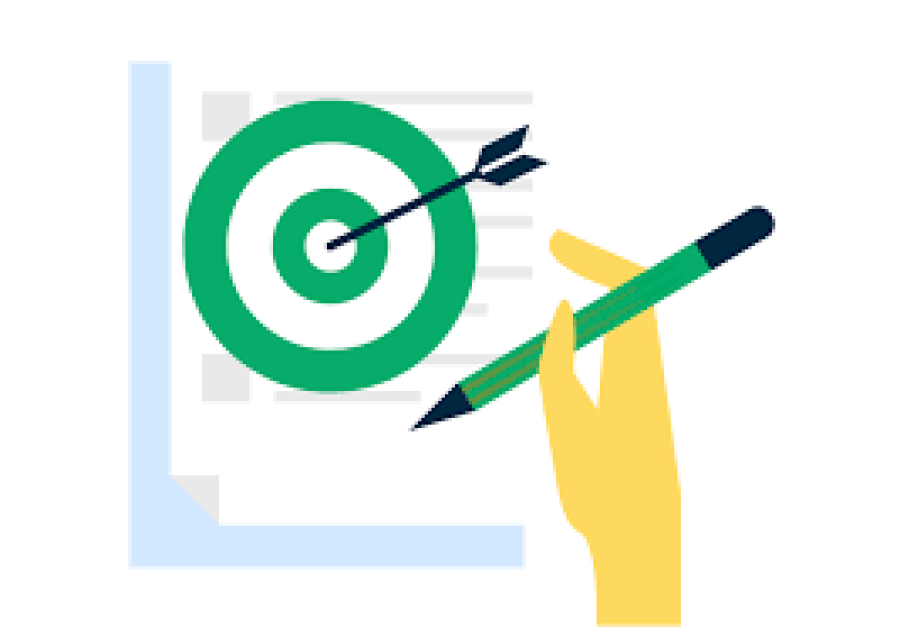Client Onboarding Checklist for Website Projects
For freelance developers and agencies, delivering a successful website project starts long before the first line of code is written. It begins with effective client onboarding. 💼✨
A solid onboarding process helps establish trust, gather the right information, manage expectations, and avoid misunderstandings that can derail the project. When you onboard clients properly, you lay the groundwork for clear communication, smooth collaboration, and timely delivery.
At FreelancerBridge, we understand how important it is to start strong. That’s why this guide offers a comprehensive Client Onboarding Checklist tailored specifically for website projects—so you can hit the ground running with confidence and clarity. 🚀📋
📝 Long Description: Client Onboarding Checklist for Website Projects
Client onboarding is more than just a welcome email—it's a structured process to align your services with the client's expectations and goals. Without proper onboarding, projects often face delays, scope creep, or frustrating communication gaps.
Whether you’re a solo web developer or run a small design agency, the steps below will help you craft a friction-free onboarding experience that leads to successful website launches—and repeat business. 💻🧠
✅ 1. Initial Discovery Call 🤝
Start with a face-to-face video call or phone call to understand your client's vision, brand, and expectations.
🗣️ Discuss:
Their business goals
Why they need a website (new site, redesign, rebranding)
Target audience and ideal user
Competitor websites they admire
Features and functionalities they want
🎯 Purpose: To ensure you’re aligned before you dive into project planning.
✅ 2. Send a Client Questionnaire 📝
A professional onboarding checklist always includes a detailed intake form or questionnaire.
📋 Key questions to include:
What are your primary business goals for this website?
What content will be needed (text, images, videos)?
Do you already have a domain/hosting?
Who will be the main point of contact?
What is your desired launch date?
💡 Tools: Use Google Forms, Notion, Typeform, or PDF docs.
✅ 3. Define the Project Scope Clearly 🧾
Before starting, outline exactly what is included in the project and what’s not.
📦 Your scope should include:
Number of pages
Platforms (e.g., WordPress, Shopify, custom HTML)
Features (contact forms, eCommerce, blogs, integrations)
Content delivery responsibilities
Responsive design, SEO basics, speed optimization
🛑 This prevents scope creep and sets professional boundaries.
✅ 4. Draft and Sign a Contract 🖋️
Never start work without a signed agreement. Contracts protect both you and your client.
🔐 Include:
Project scope
Timeline
Payment milestones
Revision limits
Intellectual property rights
Termination clauses
💡 Use platforms like Bonsai, HelloSign, or Canva to draft and send professional contracts.
✅ 5. Set Up Project Management Tools 🛠️
Smooth onboarding also means organized project tracking.
📂 Recommended tools:
Trello or Asana for task tracking
Notion or ClickUp for content and deliverables
Google Drive or Dropbox for file sharing
Slack or WhatsApp for real-time communication
🧠 Tip: Share a simple dashboard or client portal for visibility.
✅ 6. Request All Branding Assets 🎨
To design a site that aligns with the client's brand, collect all brand elements upfront.
📁 Ask for:
Logo files (SVG, PNG)
Brand colors and fonts
Style guide or brand kit
Social media links and handles
Any previous marketing materials
🎯 This saves time and ensures design consistency.
✅ 7. Gather Website Content 🖼️
Clarify who is providing the content—and by when.
📑 Include:
Homepage copy
About Us and Service pages
Product details (for eCommerce)
Blog posts (if applicable)
Images, videos, testimonials
🚨 Pro Tip: Have a separate deadline for content. Projects often get delayed due to missing or late content.
✅ 8. Set Milestones and Timelines 📅
Break the project into manageable phases, each with specific dates.
📌 Example Timeline:
Week 1: Wireframes and design mockups
Week 2–3: Development
Week 4: Revisions and content implementation
Week 5: Testing and launch
🧭 A clear roadmap builds trust and accountability on both sides.
✅ 9. Clarify Communication Channels 📬
Avoid confusion by setting official communication methods.
📲 Choose:
Email for formal updates
Slack or WhatsApp for quick replies
Zoom or Meet for reviews and calls
📢 Let them know your working hours and response time, so they don’t expect 24/7 availability.
✅ 10. Define the Revision Process 🔁
Clients often assume unlimited changes unless you set boundaries.
🖊️ Explain:
How many revisions are included (usually 2–3 rounds)
What counts as a revision
The cost of additional changes
🎯 This avoids endless tweak cycles and keeps the project on schedule.
✅ 11. Set Up a Feedback System 🗣️
Good onboarding includes a plan for feedback throughout the project.
💬 Tips:
Use Google Docs or InVision for commenting
Ask structured questions like:
“Does this layout align with your vision?”
“Would you like more whitespace or visual hierarchy?”
🧠 Proactive feedback collection keeps you from redoing entire sections later.
✅ 12. Discuss Hosting and Domain Needs 🌐
Clarify whether:
They already own a domain and hosting
You’ll help them set it up
You’ll manage it after launch (if yes, mention cost)
🖥️ Include support options like:
Post-launch maintenance
Monthly security and update plans
This builds long-term income if they need ongoing support.
✅ 13. Provide an Onboarding Welcome Packet 📦
Impress clients with a polished welcome kit or onboarding document.
📑 Include:
Project summary
Your process in 3–5 steps
Tools used and timelines
Payment schedule
FAQs
💡 You can create a branded PDF or use Notion for an interactive version.
✅ 14. Confirm Payments and Invoicing 💳
Get payment terms out of the way before starting.
✔️ Best practices:
Ask for 30–50% upfront
Use payment platforms like PayPal, Razorpay, or Stripe
Set due dates for milestone payments
🧾 Example:
50% upfront, 25% after development, 25% on launch.
Always send invoices on time and maintain payment records.
✅ 15. Establish Boundaries and Expectations ⏰
To protect your time and mental health, communicate clearly about:
Availability hours
Expected response time
Weekends and holidays
Emergency protocols (what is urgent vs not)
💡 This prevents burnout and fosters a more respectful working relationship.
📌 Extra Tips for Smoother Client Onboarding
✅ Create Templates
Save time by creating reusable templates for contracts, welcome packets, and questionnaires.
✅ Educate Clients Gently
Many clients are not tech-savvy. Offer brief explanations of your process, tools, or timelines as needed.
✅ Over-Communicate at First
It’s better to provide too much clarity than leave them guessing.
✅ Offer Bonuses
Include a small welcome bonus (like a free favicon or 404 page design) to delight your client early.
💼 Conclusion: Great Projects Start with Great Onboarding
Client onboarding sets the tone for the entire website project. By having a structured and professional onboarding checklist, you reduce confusion, increase satisfaction, and make your job significantly easier.
At FreelancerBridge, we equip freelancers with real-world strategies that help build sustainable client relationships and grow your freelance business with confidence.
So next time you take on a website project—use this checklist and start strong. Because how you begin often determines how you finish. 🏁🚀For freelance developers and agencies, delivering a successful website project starts long before the first line of code is written. It begins with effective client onboarding. 💼✨
A solid onboarding process helps establish trust, gather the right information, manage expectations, and avoid misunderstandings that can derail the project. When you onboard clients properly, you lay the groundwork for clear communication, smooth collaboration, and timely delivery.
At FreelancerBridge, we understand how important it is to start strong. That’s why this guide offers a comprehensive Client Onboarding Checklist tailored specifically for website projects—so you can hit the ground running with confidence and clarity. 🚀📋
📝 Long Description: Client Onboarding Checklist for Website Projects
Client onboarding is more than just a welcome email—it's a structured process to align your services with the client's expectations and goals. Without proper onboarding, projects often face delays, scope creep, or frustrating communication gaps.
Whether you’re a solo web developer or run a small design agency, the steps below will help you craft a friction-free onboarding experience that leads to successful website launches—and repeat business. 💻🧠
✅ 1. Initial Discovery Call 🤝
Start with a face-to-face video call or phone call to understand your client's vision, brand, and expectations.
🗣️ Discuss:
Their business goals
Why they need a website (new site, redesign, rebranding)
Target audience and ideal user
Competitor websites they admire
Features and functionalities they want
🎯 Purpose: To ensure you’re aligned before you dive into project planning.
✅ 2. Send a Client Questionnaire 📝
A professional onboarding checklist always includes a detailed intake form or questionnaire.
📋 Key questions to include:
What are your primary business goals for this website?
What content will be needed (text, images, videos)?
Do you already have a domain/hosting?
Who will be the main point of contact?
What is your desired launch date?
💡 Tools: Use Google Forms, Notion, Typeform, or PDF docs.
✅ 3. Define the Project Scope Clearly 🧾
Before starting, outline exactly what is included in the project and what’s not.
📦 Your scope should include:
Number of pages
Platforms (e.g., WordPress, Shopify, custom HTML)
Features (contact forms, eCommerce, blogs, integrations)
Content delivery responsibilities
Responsive design, SEO basics, speed optimization
🛑 This prevents scope creep and sets professional boundaries.
✅ 4. Draft and Sign a Contract 🖋️
Never start work without a signed agreement. Contracts protect both you and your client.
🔐 Include:
Project scope
Timeline
Payment milestones
Revision limits
Intellectual property rights
Termination clauses
💡 Use platforms like Bonsai, HelloSign, or Canva to draft and send professional contracts.
✅ 5. Set Up Project Management Tools 🛠️
Smooth onboarding also means organized project tracking.
📂 Recommended tools:
Trello or Asana for task tracking
Notion or ClickUp for content and deliverables
Google Drive or Dropbox for file sharing
Slack or WhatsApp for real-time communication
🧠 Tip: Share a simple dashboard or client portal for visibility.
✅ 6. Request All Branding Assets 🎨
To design a site that aligns with the client's brand, collect all brand elements upfront.
📁 Ask for:
Logo files (SVG, PNG)
Brand colors and fonts
Style guide or brand kit
Social media links and handles
Any previous marketing materials
🎯 This saves time and ensures design consistency.
✅ 7. Gather Website Content 🖼️
Clarify who is providing the content—and by when.
📑 Include:
Homepage copy
About Us and Service pages
Product details (for eCommerce)
Blog posts (if applicable)
Images, videos, testimonials
🚨 Pro Tip: Have a separate deadline for content. Projects often get delayed due to missing or late content.
✅ 8. Set Milestones and Timelines 📅
Break the project into manageable phases, each with specific dates.
📌 Example Timeline:
Week 1: Wireframes and design mockups
Week 2–3: Development
Week 4: Revisions and content implementation
Week 5: Testing and launch
🧭 A clear roadmap builds trust and accountability on both sides.
✅ 9. Clarify Communication Channels 📬
Avoid confusion by setting official communication methods.
📲 Choose:
Email for formal updates
Slack or WhatsApp for quick replies
Zoom or Meet for reviews and calls
📢 Let them know your working hours and response time, so they don’t expect 24/7 availability.
✅ 10. Define the Revision Process 🔁
Clients often assume unlimited changes unless you set boundaries.
🖊️ Explain:
How many revisions are included (usually 2–3 rounds)
What counts as a revision
The cost of additional changes
🎯 This avoids endless tweak cycles and keeps the project on schedule.
✅ 11. Set Up a Feedback System 🗣️
Good onboarding includes a plan for feedback throughout the project.
💬 Tips:
Use Google Docs or InVision for commenting
Ask structured questions like:
“Does this layout align with your vision?”
“Would you like more whitespace or visual hierarchy?”
🧠 Proactive feedback collection keeps you from redoing entire sections later.
✅ 12. Discuss Hosting and Domain Needs 🌐
Clarify whether:
They already own a domain and hosting
You’ll help them set it up
You’ll manage it after launch (if yes, mention cost)
🖥️ Include support options like:
Post-launch maintenance
Monthly security and update plans
This builds long-term income if they need ongoing support.
✅ 13. Provide an Onboarding Welcome Packet 📦
Impress clients with a polished welcome kit or onboarding document.
📑 Include:
Project summary
Your process in 3–5 steps
Tools used and timelines
Payment schedule
FAQs
💡 You can create a branded PDF or use Notion for an interactive version.
✅ 14. Confirm Payments and Invoicing 💳
Get payment terms out of the way before starting.
✔️ Best practices:
Ask for 30–50% upfront
Use payment platforms like PayPal, Razorpay, or Stripe
Set due dates for milestone payments
🧾 Example:
50% upfront, 25% after development, 25% on launch.
Always send invoices on time and maintain payment records.
✅ 15. Establish Boundaries and Expectations ⏰
To protect your time and mental health, communicate clearly about:
Availability hours
Expected response time
Weekends and holidays
Emergency protocols (what is urgent vs not)
💡 This prevents burnout and fosters a more respectful working relationship.
📌 Extra Tips for Smoother Client Onboarding
✅ Create Templates
Save time by creating reusable templates for contracts, welcome packets, and questionnaires.
✅ Educate Clients Gently
Many clients are not tech-savvy. Offer brief explanations of your process, tools, or timelines as needed.
✅ Over-Communicate at First
It’s better to provide too much clarity than leave them guessing.
✅ Offer Bonuses
Include a small welcome bonus (like a free favicon or 404 page design) to delight your client early.
💼 Conclusion: Great Projects Start with Great Onboarding
Client onboarding sets the tone for the entire website project. By having a structured and professional onboarding checklist, you reduce confusion, increase satisfaction, and make your job significantly easier.
At FreelancerBridge, we equip freelancers with real-world strategies that help build sustainable client relationships and grow your freelance business with confidence.
So next time you take on a website project—use this checklist and start strong. Because how you begin often determines how you finish. 🏁🚀


 by Emily
by Emily




